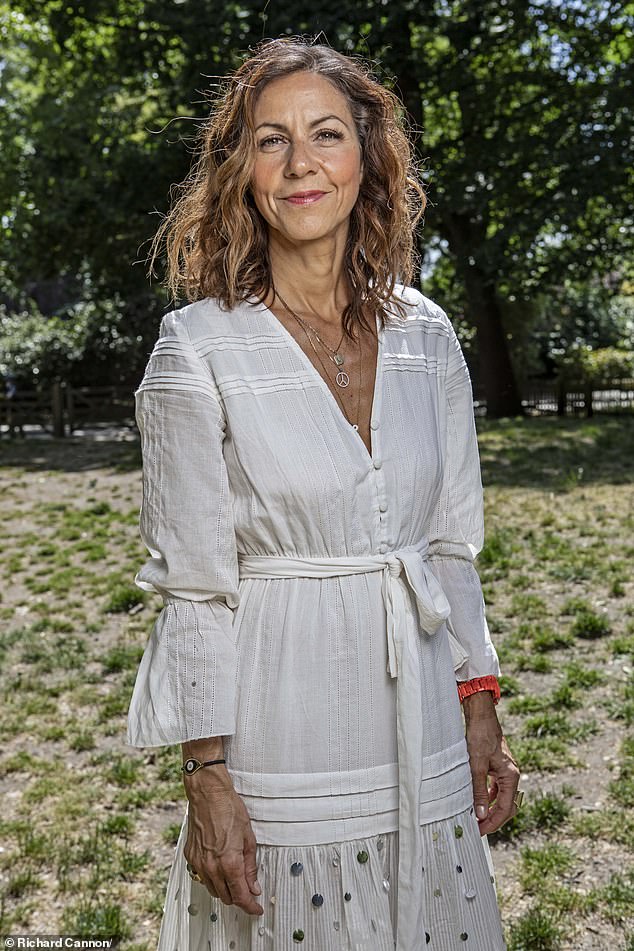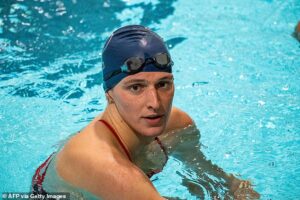
If you had a risk factor for breast cancer, would you want to know? And what if that same risk factor meant that any tumours that did occur would be harder to spot on standard scans?
That risk factor is having dense breasts, which externally don’t look any different but are formed of thick, glandular tissue with little fat.
Research has increasingly shown there is a clear danger associated with having dense breast tissue – in fact, well over a million women in the UK are at a heightened risk of cancer as a result.
Yet unlike in other countries such as the US, the powers-that-be in the UK continue to decide to keep women in the dark about whether or not they have dense breasts – and the implications of cancers being missed until they are harder to treat, or worse, incurable.
Density is not something you can feel or spot, it requires a mammogram – a specialised X-ray. So even if a woman is identified as having dense breasts during her routine mammogram – offered every three years from the age of 50 through the national screening programme – she will not normally be informed, and in many cases it won’t even be recorded in her medical notes.
Good Health has spoken to experts and patient groups who agree that this must change.
‘I know of too many women who are no longer with us because they weren’t told they had dense breasts and as a result their cancer wasn’t spotted until it was too late,’ says Cheryl Cruwys, founder of the patient advocate group Breast Density Matters UK.
She wants women to be told if they have dense breasts and to be offered additional imaging that may be more effective – dense breast tissue can make it harder to identify tumours on a mammogram.
It’s a call to action backed by eminent voices from the world of medicine, such as Professor Kefah Mokbel, a consultant breast surgeon at the London Breast Institute. He has researched the possible causes and best screening methods for dense breasts.
‘Women have the right to know about their breast density because it has implications both for cancer risk and for the accuracy of mammographic screening,’ he told Good Health. ‘It’s an important part of personalising breast health management.’

TV presenter Julia Bradbury was diagnosed with breast cancer in 2020 – but only after a mammogram failed to spot a tumour in her dense breasts
Experts from other countries where women are told about their breast density remain incredulous at the stance in the UK.
‘Just knowing is pertinent to taking care of yourself,’ says Wendie Berg, a professor of radiology at the University of Pittsburgh, who has dense breasts and 11 years ago developed breast cancer which was missed on a mammogram. ‘The denser your breasts are, the more you want to be aware of changes in your breasts and not ignore them.’
TV presenter Julia Bradbury, who was diagnosed with breast cancer in 2020 – only after a mammogram failed to spot a tumour in her dense breasts – told Good Health she believes not telling women if they have dense breasts ‘is absurd’. What makes this approach even more surprising is that the increased health risk associated with dense breasts is not a new finding – it’s been known about since the 1970s.
Breasts are formed mainly of fat and fibrous, glandular tissue which produces milk. Dense breasts have a higher proportion of the glandular tissue. The level of density is generally rated A to D according to the radiologists viewing the scan. A is mostly fatty; B, ‘scattered’ – largely fat with patches of dense tissue; C, ‘heterogeneous density’ – a mixture, but mainly dense tissue; and D, ‘extremely dense’ tissue.
Roughly half of women fall into categories C and D – and are considered to have dense breasts.
Younger women tend to have the most dense breasts, and as levels of oestrogen drop around the menopause, so too does density (oestrogen encourages the growth of dense glandular tissue, needed to produce milk during a woman’s fertile years). That’s why HRT may halt the natural reduction in density.
Women with less body fat are also more likely to have dense breasts – but this isn’t universally the case.
Those with the most dense breast tissue – around 10 per cent of women – are at an increased risk of developing cancer – as much as two-fold higher, suggested a 2022 research review in the journal The Breast, although some studies suggest the risk can be up to six times higher.
What’s more, on a mammogram dense tissue shows as white, as do tumours.
Indeed, spotting cancer in dense breasts is often likened to trying to spot a snowball in a snowstorm. Studies (such as a review in the British Journal of Cancer in 2019) suggest that around 40 per cent of cancers are missed on mammograms of dense breasts. It’s thought to be because the denser tissue makes it harder for the X-rays to penetrate.

On a mammogram dense tissue shows as white, as do tumours – making them harder to detect
That’s why offering women additional imaging such as an ultrasound, which makes it easier to see cancers, may be beneficial. It certainly was in Julia Bradbury’s case.
She had a mammogram after feeling a lump in her breast, and was initially told that there was nothing to worry about.
‘My tumour was missed twice via mammogram and was only discovered via ultrasound, by then measuring 6cm,’ she said. Had she been diagnosed earlier, ‘perhaps I could have had a lumpectomy not a mastectomy’.
With a lumpectomy, the cancerous tumour is cut out during surgery. But with a mastectomy, the entire breast is removed.
In many parts of the world, such as France, Switzerland and Lithuania, women are told if they have dense breasts after a mammogram and told to come back for an ultrasound scan.
In the US it is now mandatory for women to be told if they have dense breasts, following a ruling by the medical regulator, the Food and Drug Administration, which came into force last September.
After a mammogram, not only will women be informed if they have dense breasts, they receive a letter warning them that ‘dense tissue makes it harder to find cancer on a mammogram and raises the risk of developing breast cancer’.
To anyone in any doubt about the difference knowing about dense breasts can make, compare the outcome of two women – Susan Leeson, 57, a former career coach who lives in Balham, south-west London; and Louise Duffield, 60, who works in local government and lives in Ely, Cambridgeshire.
Both have had breast cancer – but while Louise is back at work and planning for the future, Susan is trying to make the best of what time she has left.
Susan wishes someone had warned her that she had mixed density breasts after a ‘clear’ mammogram in May 2021.
Seven months later she went to A&E with agonising back pain.
A strawberry-sized tumour in her right breast had been missed on her mammogram, and by then had spread to eight spots around her body and was incurable. ‘When they told me I just kept saying over and over ‘but I recently had a clear mammogram’,’ says Susan, who has a teenage daughter.

Louise Duffield, 60, took part in a trial which not only informed women that they had dense breasts, it offered them extra checks too

Susan Lesson, 57, had a tumour that was missed by a mammogram. By the time it was spotted it had spread to eight parts of her body and the cancer now incurable
While human error may also have played a part, she says: ‘Had I been told I had even mixed density breasts I would have looked it up, seen the risk and undergone extra checks.
‘Because if you have even partially dense breasts, and that’s where your cancer happens to be hiding, then good luck.’
She is living with a terminal diagnosis and knows she may have little time left.
Louise, by contrast, says: ‘My cancer was spotted so early that in many ways I don’t feel as if I had cancer at all.’
The difference is Louise took part in a trial which not only informed women that they had dense breasts, it offered them extra checks too.
Louise was one of 9,000 women in the UK who recently had a clear mammogram – which also showed they had dense breasts – to be recruited to the BRAID trial led by Fiona Gilbert, a professor of radiology at the University of Cambridge.
Every 18 months during the five-year study they were offered one of three screening methods – a type of ultrasound, or a ‘contrast’ mammogram or MRI, both involving first injecting dye that helps make tumours easier to spot.
Louise was allotted to the MRI arm – and it was shortly after her second scan, in February last year, that she got a call telling her it had detected six early cancers – each the size of grains of sand. Her treatment – surgery and five sessions of radiotherapy – took little more than a month to complete.
‘I didn’t have to go through a mastectomy or the side effects of chemo – that was better for me, the family and the NHS,’ says Louise, who lives with husband Fred, 64, a clerk of works, and has two children and four grandchildren.
Experts and campaigners hope that the results of the BRAID trial will bring an impetus for change.
The UK National Screening Committee (NSC), the body that decides on screening protocols, last considered calls to tell women if they have dense breasts in 2019 – it was rejected, in part due to a lack of evidence showing a benefit.

Fiona Gilbert, a professor of radiology at the University of Cambridge led the BRAID trial which proved extra screening identified cancers that may otherwise have been missed
The BRAID study, published in The Lancet in May, proved extra screening identified cancers that may otherwise have been missed.
Last month Karin Smyth, health minister for secondary care, told the House of Commons that the NSC was looking at ‘whether women with dense breasts need to be screened differently’.
Professor Gilbert told Good Health: ‘We worked out that if we offered supplemental screening to those 10 per cent with the densest breasts, we would pick up 3,500 more small cancers every year, which we think is really going to make a difference.’
This could lead to 700 lives being saved each year.
‘It’s a great step forward and we can wave this into the faces of people who say we don’t need any changes to the screening programme,’ says Wera Hobhouse, the Liberal Democrat MP for Bath, who earlier this year put forward a Private Member’s Bill calling for changes to the breast cancer screening programme.
She told Good Health that she would like ‘women with dense breasts to be offered follow-up ultrasound’.
Currently women with dense breasts whose cancer is missed on mammogram may not be offered any alternative screening even after they’ve had treatment.
This is something that causes sleepless nights for Jo Kerfoot, 50, an administration manager who lives in Stockport with fiance Nick, 44, a dental technician, and has two children aged 15 and 11.
In 2020, aged 45, she had discharge from her left nipple and was sent for checks by her GP.
She was given a mammogram and ultrasound, which revealed a 3cm tumour – but a subsequent MRI revealed a further two cancers of similar size that had been missed. Rather than a lumpectomy, Jo now needed a mastectomy.
‘I was also told casually by a doctor ‘by the way, you have very dense breasts’,’ she recalls.
She now has mammograms every year in her remaining breast and fears that her dense tissue may obscure further cancers.
‘I lie awake at night and worry about it,’ she says. ‘Why would someone like me who has already had cancer not be offered alternative screening?’

Alison Ranger is a consultant clinical oncologist at the Royal Marsden NHS Foundation Trust in London
There are pluses and minuses to all imaging methods, says Professor Cliona Kirwan, a consultant oncoplastic breast surgeon at Manchester University NHS Foundation Trust. She adds: ‘Ultrasound is good at looking at small areas of the breast, whereas mammograms are better at looking at the whole breast.’
The contrast dye technique used in the BRAID study, while effective, has a small risk of causing an allergy-type reaction.
Some say additional screening techniques need to be in place before you tell women they have dense breasts.
‘I understand many patients will want to know about density to inform the decisions they make, but the question is – what will you do with that information?’ explains Dr Alison Ranger, a consultant clinical oncologist at the Royal Marsden NHS Foundation Trust in London. ‘Unless there is some system in place for additional screening, it causes additional anxiety.’
Professor Gilbert believes that rather than offering all women with dense breasts additional screening, we should target those most at risk – ‘the top 5 per cent’, according to not only their breast density but also other risk factors such as family history and lifestyle.
‘Between 20 and 30 per cent of women are at very low risk of developing breast cancer and they could drop [from the current three-year] to five-year screening,’ she suggests, thus providing more slack in the system to target the higher risk cases more.
The low-risk group would be those ‘at normal weight, with a low alcohol intake, no family history of breast cancer, who don’t take HRT – late menarche (periods) and early menopause,’ suggests Professor Gilbert.
Professor Berg believes the radiology community in the UK is similar to that in the US: ‘Hesitant to tell women they had dense breasts in case it meant they stop going for mammograms.
‘And we don’t want that to happen – because even in the densest breast, we still find half the cancers.’
But ultimately, she says, the arguments about telling women about density have become over-complicated.
‘The bottom line is, if a woman has breast cancer, she should have the chance to have it found early.
‘A lot of women resent it when they’re diagnosed with a large cancer and they go to their doctor who says, ‘oh, well, what did you expect? You have dense breasts?’ And they’re like – why didn’t anybody ever tell me?’
Visit densebreast-info.org for a breast density request form





